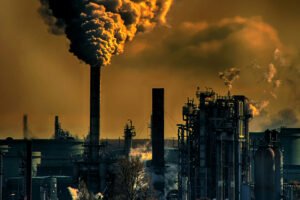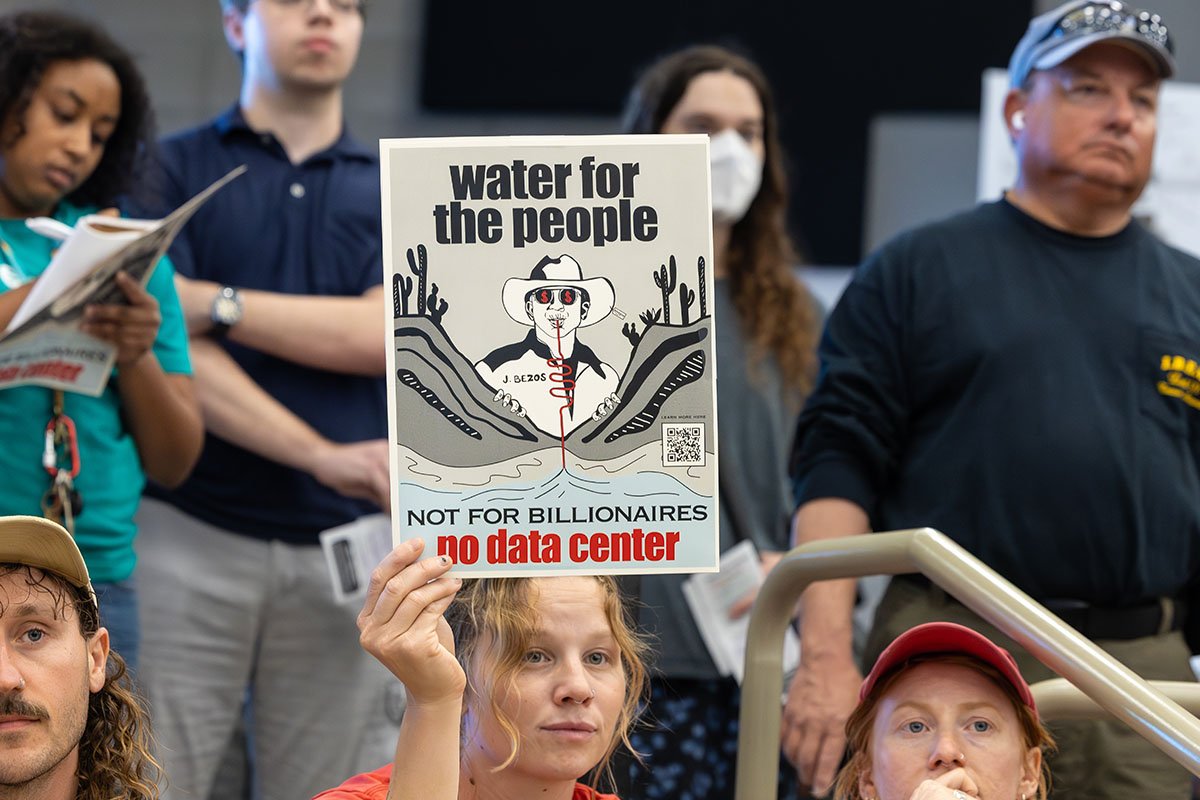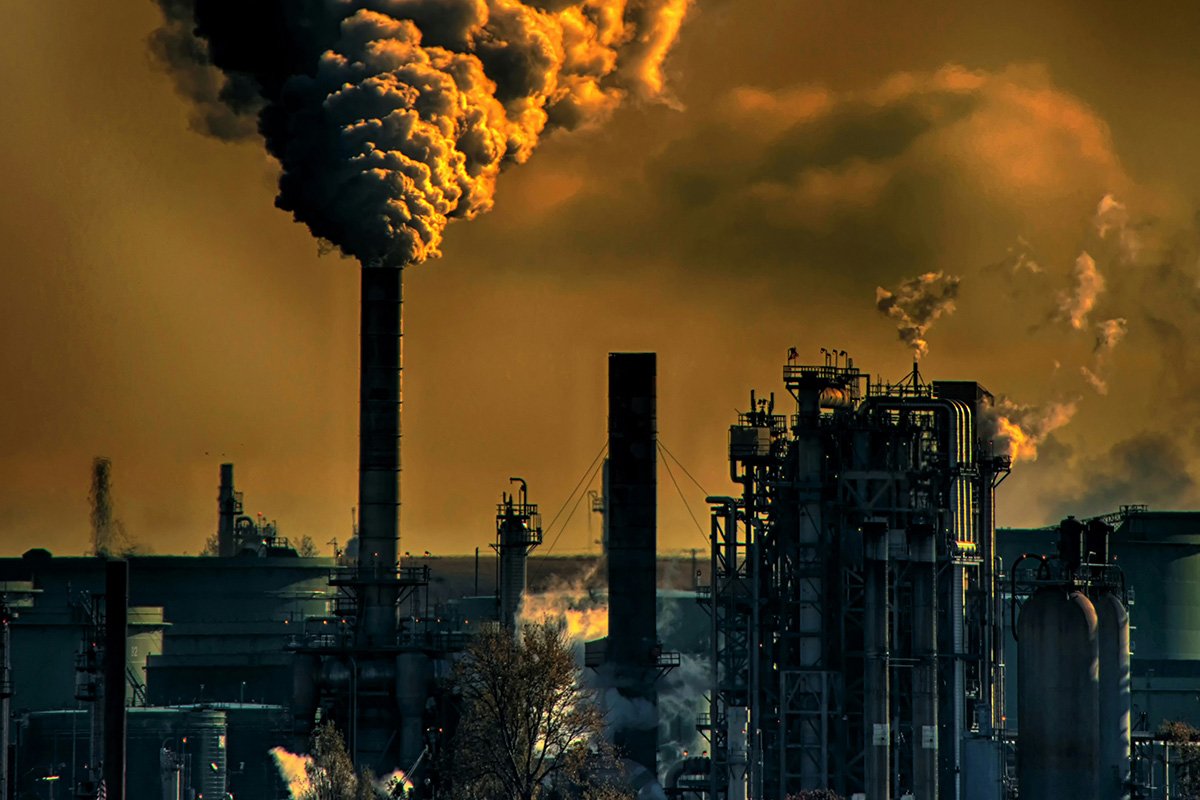
In June, it was Milwaukee. In late August, it will be Chicago. Both cities host political conventions where delegates from the Republican and Democratic parties, respectively, officially nominate their candidates for the presidency and vice presidency.
The conventions are massive. An estimated 50,000 people—delegates, alternate delegates, politicians, media, and visitors—attended the Republican National Convention (RNC) in Milwaukee. Chicago expects to see roughly the same number of attendees for the Democratic National Convention (DNC).
Preparing for such an undertaking requires months of planning: hiring extra security and law enforcement personnel, and planning meals and entertainment. Hotels are booked; roads are blocked—that’s the work done in advance. But when the convention ends, packed bars and restaurants empty, and the crowds disperse, then comes the cleanup. The environmental aftermath of both conventions lingers much longer than confetti on the streets.
Economic Boosts and Health Losses
Any convention, by its nature, brings a large amount of people into a place. That often results in an economic boost to the city where the event is held. Yet historically, these political conventions can lead to a loss of business, as people tend to avoid the crowded areas.
Workers popped the balloons to be thrown in the trash—all 100,000 of them.In Chicago, organizers conducted virtual meetings for concerned residents who live near Union Center, where the DNC will be held. Cars will be restricted in a large zone around the center, which will impact businesses as well as commutes. In Milwaukee during the RNC, as the Wisconsin Examiner reported, “Security fences surrounding the convention center made it difficult for delegates to get to bars and restaurants just outside the secure zone.”
The Examiner also reported on huge lines of traffic and congestion. Bottlenecked traffic not only means difficulty getting to work, school, appointments, and shopping, but it also contributes to more carbon dioxide emissions, leading to additional pollution and yet more exposure time for drivers, passengers, and pedestrians alike. That pollution agitates symptoms of asthma, heart conditions, respiratory illness, and other health issues, particularly among vulnerable populations, including children, the elderly, and those who are immunocompromised.
Trash and More Trash
Simply avoiding the area doesn’t work when a big convention comes to one’s city, especially with apartments and businesses included in the convention’s security zone. Pollution and trash generated by the conventions are unavoidable for many nearby residents.
A political conference produces extra debris in the form of literature, badges, and promotional materials like buttons, signs, and hats. In 2016, the HuffPost characterized this as “swag that will probably end up in the garbage.” Vendors outside of conventions sell cheaply made T-shirts, themed sunglasses, drink koozies, and necklaces.
A lot of this merchandise is plastic, and it can’t always be recycled. For the vast majority of plastic used by consumers, it’s “practically impossible” to recycle it, according to NPR, which noted the problem is only increasing. As NPQ reported in 2020, 79 percent of non-recycled plastic “ends up in our landfills. There’s at least 8 million metric tons in the ocean.”
“People looking at holding events here want their events to add to a city in a positive way, not adding more to landfills unnecessarily.”
Sign up for our free newsletters
Subscribe to NPQ's newsletters to have our top stories delivered directly to your inbox.
By signing up, you agree to our privacy policy and terms of use, and to receive messages from NPQ and our partners.
That’s not even mentioning the balloons used in political conventions. For the RNC, thousands of red, white, blue, and gold balloons were dropped to commemorate the end of the convention. Dramatic—and when it comes to the planet, devastating. The balloons were blown up by local schoolchildren. As for cleaning them up? Workers popped the balloons to be thrown in the trash—all 100,000 of them.
The Response and Responsibilities of the Conventions
Host cities have done what they can to prepare for the political conventions and the increased garbage they produce. As with conventions in years past, volunteers picked up much of the RNC trash. In Milwaukee, the city planned for some disruptions to regular city trash pickup (and mail delivery) due to the changed traffic patterns. Still, Milwaukee set out extra litter bins on the street, and a group called Compost Crusaders led the charge to bag food waste from the RNC Food waste is a significant part of the climate change fight because of its contributions to emissions.
Travel accounts for 90 percent of a large event’s emissions.
Between 30 to 40 percent of all food in the United States is thrown away, and as NPQ wrote in 2023, “Most of this food waste ends up in landfills, where food comprises the largest element of trash. While in the landfills, food decomposes and emits methane.” As much as 10 percent of global emissions can be traced back to food waste.
After the RNC convention, the Compost Crusaders helped divert the convention’s food waste from landfills, turning it into rich compost for local gardens. As Marty Brooks, president and CEO of the Wisconsin Center District, told Milwaukee’s NPR WUWM, “People looking at holding events here want their events to add to a city in a positive way, not adding more to landfills unnecessarily.”
When it comes to the DNC, two Chicago-based sustainability firms were hired well in advance, tasked with cutting down the convention’s carbon emissions. Consultants from the firms have said they’re focused not just on reducing food waste but on repurposing the materials that go into the convention’s events, from banners to water bottles. Marley Finnegan, the founder of one of the firms, Purpose, told WBEZ Chicago that “large events inevitably produce emissions that can be traced back to travel, energy sourcing, food and waste,” calculating that travel accounts for 90 percent of a large event’s emissions.
The two conventions diverge in how much time and attention they planned to allocate to the climate crisis during the events. The RNC climate platform was 16 pages long, while a draft climate platform of the DNC was 80 pages long.
Regardless of their messages, both political conventions leave a sizable environmental imprint on the cities in which they’re held. As Brooks said, “We want to make sure we have the right impact on our world, not just taking, but giving to the city.”











